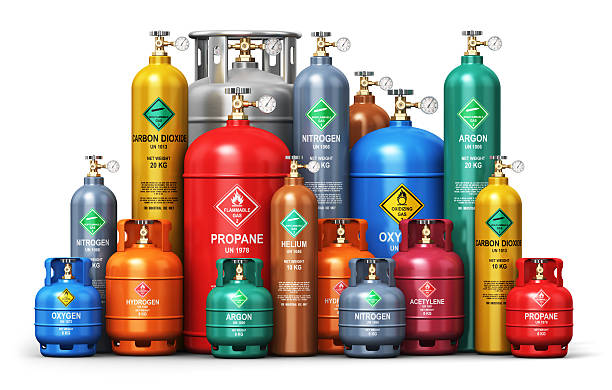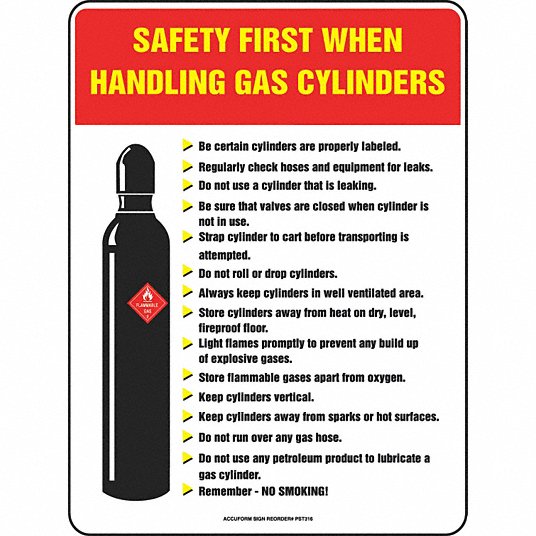
Gas is one of the most fundamental states of matter. Gas cylinders are used to contain various gases which can be harmful if not properly handled, they are stored in cylinders that are easier to pack together. So it’s a trade-off between efficiency and practicality.
Gas cylinders are a convenient way to transport and store gases under pressure. These gases are used for many different purposes including:

- chemical processes;
- soldering, welding, and flame cutting;
- breathing (e.g. diving, emergency rescue);
- medical and laboratory uses;
- dispensing beverages;
- fuel for vehicles (e.g. fork-lift trucks);
- extinguishing fires;
- heating and cooking;
- water treatment.
HOW TO HANDLE
- Use gas cylinders in a vertical position, unless specifically designed to be used otherwise;
- Securely restrain cylinders to prevent them from falling over;
- Always double-check that the cylinder/gas is the right one for the intended use;
- Before connecting a gas cylinder to equipment or pipe-work make sure that the regulator and pipe-work are suitable for the type of gas and pressure being used.
- When required, wear suitable safety shoes and other personal protective equipment when handling gas cylinders;
- Do not use gas cylinders for any other purpose than the transport and storage of gas;
- Do not drop, roll or drag gas cylinders.
- Close the cylinder valve and replace dust caps, where provided, when a gas cylinder is not in use.

SAFETY MEASURES
Keeping gases stable within each cylinder is important so that the gas mixtures maintain their composition. There can be many reasons why the stability of a gas within a cylinder may shift. This may be caused by things like changes in temperature, storage time, gas reactions, and pressure. They must be initially inspected before they are put into service to ensure they conform to the approved standard and be periodically examined at appropriate intervals to ensure that they remain safe while in service.
WHERE TO BUY – See Offers










